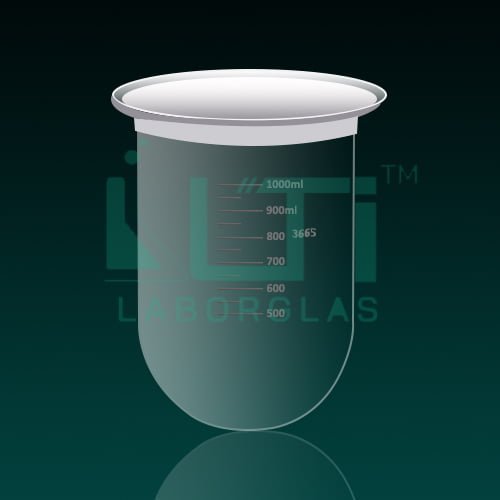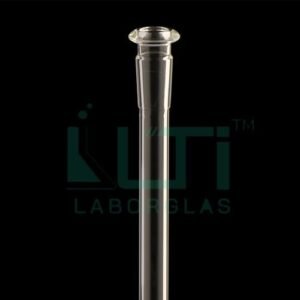- Made From Heat Resistant, Low Expansion 3.3 Borosilicate Glass
- Complies with DIN ISO 3585 & USP standard
- Ideal for determining the dissolution characterism of drugs in capsules and tablets
- Graduated in interval of 50ml
- Smooth hemispherical base
- Confirms to all requirements of USP
| PART No. | Capacity (ml) | Dia (mm) | Height (mm) | PACK Qty. |
| 5720-1000 | 1000 | 131 | 171 | 6 |
Here are some common uses for these flasks:
- Dissolution Testing: Flasks-D without side cuts are used as vessels in dissolution testing apparatus. During dissolution testing, a solid dosage form (such as a tablet or capsule) is placed in the flask, and the dissolution medium is continuously agitated. The dissolution medium simulates the conditions in the gastrointestinal tract. The rate at which the drug dissolves is a critical parameter for assessing the drug’s bioavailability.
- Standardized Testing Conditions: The design of Flasks-D without side cuts is standardized to meet the requirements specified in pharmacopeias, such as the United States Pharmacopeia (USP) or other relevant standards. These standards ensure consistency and reproducibility in dissolution testing across different laboratories.
- Preventing Edge Effects: The absence of side cuts in these flasks helps prevent edge effects during dissolution testing. Side cuts or notches can affect the flow of the dissolution medium around the dosage form, potentially influencing the dissolution rate.
- Minimizing Contamination: The design of Flasks-D is intended to minimize the risk of contamination during dissolution testing. The absence of side cuts reduces the likelihood of particulate matter or debris getting trapped in the vessel.
- Compatibility with Dissolution Apparatus: Flasks-D without side cuts are designed to be compatible with specific dissolution apparatus setups, ensuring proper fit and alignment during testing.
- Conforming to Regulatory Standards: Pharmaceutical companies conducting dissolution testing need to adhere to regulatory standards outlined by organizations such as the FDA. Using Flasks-D without side cuts that comply with relevant standards is crucial for meeting regulatory requirements.







